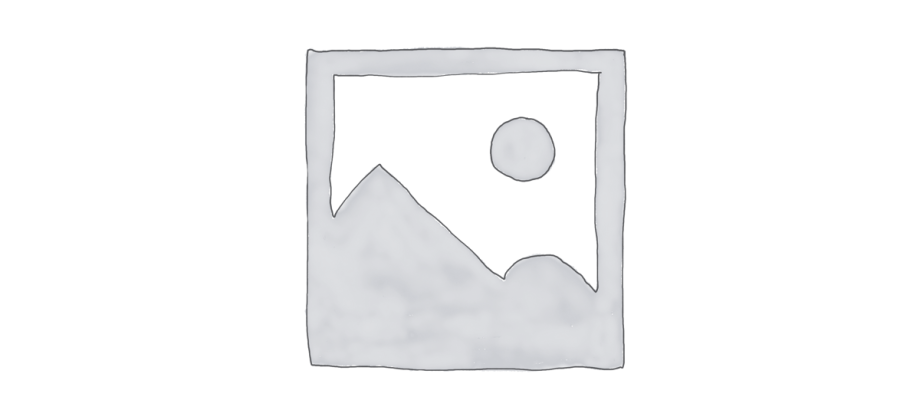
摘要: 一个小时如何编写一个支持七牛上传的 markdown 编辑器的客户端。如何能从零快速学习 nodejs,并付诸实践。介绍说是一个小时,前前后后加上代码重构,优化代码,也用了一两天得时间,但在写第一版代码的时候,的确用了很短的时候。https://github.com/zhaopengme/ndpediter技术点在做这个的时候,出发点是因为 hexo 编辑的时候,我需要使用七牛的图片外链,但是没有一个好用的支持七牛图片外链的工具。就有了自己动手做一个念头,在技术选择的时候,我最熟悉的是后台 java,前端 javascript 的搭配,因为要写一个客户端,首先想到的时候用纯 java 来实现,之前我也用 java 写过一个支持 markdown 的笔记软件 jnote ,或者做一个 web 网站,再加一个浏览器的壳,在几年之前,我写过这样的一个 demo https://github.com/zhaopengme/jbrower-demo,就是用 Mozilla 内核的浏览器框架,嵌入 web 网站的方式。可目前已经有了 node-webkit 这样的技术,就不需要的我之前的想法。用了node-webkit,搭配最好的就是 nodejs 了,我就放弃了用 java 来实现的方式,虽然我不会 nodejs,但这也给了我一个学习的 nodejs 的机会了。那就开始上手了。在内嵌 web 系统和纯 nodejs 的选择在开始设计的时候,依照我原来的想法,是采用内嵌一个 web 系统,通过 node-webkit 来打开内嵌的 web 系统来实现的,所有我开始学习 express 的文档。看了 http://www.expressjs.com.cn/ 文档后,我尝试着使用纯 nodejs 的方式来实现我的需要,读写文件,图片保存,图片上传,发现也是可以的,其实开头想想也是可以的,只是自己一个惯性思维导致的。技术干货列表nodejsnode-webkitqiniu-nodejs-sdkyeomangenerator-node-webkitlayereditormd1. nodejs主要用来实现文件的读写,图片的上传。2. node-webkit基于node.js和chromium的应用程序实时运行环境,可运行通过HTML(5)、CSS(3)、Javascript来编写的本地应用程序。从网上扒的介绍,为了占位。3. qiniu-nodejs-sdkhttps://github.com/qiniu/nodejs-sdk.v6七牛的 nodejs 的 api。4. yeomanhttp://yeoman.io/Yeoman 是 Google 的团队和外部贡献者团队合作开发的,他的目标是通过Grunt(一个用于开发任务自动化的命令行工具)和Bower(一个HTML、CSS、Javascript和图片等前端资源的包管理器)的包装为开发者创建一个易用的工作流。Yeoman 的目的不仅是要为新项目建立工作流,同时还是为了解决前端开发所面临的诸多严重问题,例如零散的依赖关系。也是从网上扒的介绍,也是为了占位。Yeoman 可以说是对已经成为体系的流程工具的封装,更简单说是”一键开发,一键部署”等等。是 generator-node-webkit 使用的前提。5. generator-node-webkithttps://github.com/Dica-Developer/generator-node-webkitgenerator-node-webkit 是基于 Yeoman 的工具,可以”一键”创建 node-webkit 的开发环境,”一键”打包环境。6. layerhttp://layer.layui.com/一个 jquery 的弹出框插件,我觉得它好用,就单独拉出来了,好东西,值得推荐。比如我得图片上传 配置 关于 保存提醒等都是使用它的。7. editormdhttps://github.com/pandao/editor.md编辑器实现的核心,实现编辑器最为主要的组成部分,在各种 markdown 实现的各种版本中,最优秀的编辑器之一,10分推荐。在开始实现之前,最好先看一下以上的几种技术的说明,方便我们理解。技术实现篇环境准备nodejs 环境作为 hexo 的使用者,nodejs 肯定会有的,即使没有,那自己安装吧,这个很容易。https://nodejs.org/。我装得 mac 版,不会告诉你用 mac 装很多东西都是用 brew 可以一键安装的。yeoman 安装npm install -g yo 这是官方的安装,有可能安装成功了,之后 node-webkit 安装会出现问题,最好用这个 npm i -g yo generator-karma。generator-node-webkit 安装npm install generator-node-webkit -g 用 npm 都是一行命令搞定,很容易吧!用 mac 的童鞋,有没有装 brew 呢?装个 brew 吧!无论是装13还是为了自己开发方便。生成开发环境以上 yeoman 和 generator-node-webkit 我们采用的都是安装全局的办法。1. 自动创建目录结构yo node-webkit 就能生成好我们需要的环境目录了,好吧!这里录个 gif 给大家看看。注意mac 现在基本都是64位的了,不要选择32位的。这个要下载 对应平台的资源,比较慢,我就停止录了。当前创建完成后,就会有下面这样的界面了。2. 下载依赖npm install & bower install 按照提醒,就可以把相关的依赖全部安装了。如果提醒没有 bower,那就 npm install bower -g,bower 也是个常用工具,也作为全局安装吧。3. 下载项目依赖前几个步骤,可以叫做工程依赖,就是每一个这样的工程,都需要这样的步骤的,这个步骤是说,我们项目需要的依赖。比如 qiniu-nodejs-sdk 就是我们项目需要的,可以通过 npm install qiniu来安装,如果我们需要 bootstrap,那么就可以用 bower install bootstrap或者npm install bootstrap…

摘要: 记录一下建博的历程,再记录一下从wordpress转移到hexo的步骤.从08年开始博客后,用过不少的博客程序,pjblog zblog typecho wordpress gae,还用过一些博客服务,35blog Google博客 点点博客 sae等.各有各的优势,反正是掏钱的稳定放心,免费的不稳定.最近用过的sae,用sae原因是当时有微博认证,用sae基本可以免费使用.自从sae修改了策略之后,送得1万豆也在前几天用完了.现在的我懒得折腾这些,就开始寻找了屌丝使用.一个免费,能绑定域名,还能少折腾的方式.选择 github 的好处github 免费提供了一个 github Pages 服务,300M 的空间,足够屌丝们使用.可以绑定域名.现在流行使用这个,程序员用这个感觉有点 B 格.可以使用 markdown 来编写.选择哪种 github pages 的博客程序可以选择有 jekyll octopress hexo 等一些, 我调查了一些, jekyll octopress 使用比较复杂, hexo 生成静态文件速度快,但我700多篇文章,也用了1分多钟.从 wordpress 转移到 hexo进入 wordpress 后台设置,选择导出,会打出一个wordpress.xml 文件.安装 hexo-migrator-wordpress 插件,执行hexo migrate wordpress wordpress.xml, 就会转化成 .md 格式化的文件.这个过程中,可能会有些错误,无法转换的问题,一般都是 wordpress 文章有一些特殊字符的问题,根据错误修改吧!如果成功,那么你只需要执行 hexo g 和 hexo d 就可以发布了.注意重要的事情要说三次,从 wordpress 转成 hexo 会丢失留言数据. 重要的事情要说三次,从 wordpress 转成 hexo 会丢失留言数据. 重要的事情要说三次,从 wordpress 转成 hexo 会丢失留言数据.
from : https://ruby-china.org/topics/19389总结web应用中常用的各种cachecache是提高应用性能重要的一个环节,写篇文章总结一下用过的各种对于动态内容的cache。文章以Nginx,Rails,Mysql,Redis作为例子,换成其他web服务器,语言,数据库,缓存服务都是类似的。以下是3层的示意图,方便后续引用: +-------+1 | Nginx | +-+-+-+-+ | | | +---------------+ | +---------------+ | | | +---+---+ +---+---+ +---+---+2 |Unicorn| |Unicorn| |Unicorn| +---+---+ +---+---+ +---+---+ | | | | | | | +---+---+ |3 +-------------+ D B +-------------+ +-------+1. 客户端缓存一个客户端经常会访问同一个资源,比如用浏览器访问网站首页或查看同一篇文章,或用app访问同一个api,如果该资源和他之前访问过的没有任何改变,就可以利用http规范中的304 Not Modified 响应头(http://www.w3.org/Protocols/rfc2616/rfc2616-sec10.html#sec10.3.5 ),直接用客户端的缓存,而无需在服务器端再生成一次内容。在Rails里面内置了fresh_when这个方法,一行代码就可以完成:class ArticlesController def show @article = Article.find(params[:id]) fresh_when :last_modified => @article.updated_at.utc, :etag => @article endend下次用户再访问的时候,会对比request header里面的If-Modified-Since和If-None-Match,如果相符合,就直接返回304,而不再生成response body。但是这样会遇到一个问题,假设我们的网站导航有用户信息,一个用户在未登陆专题访问了一下,然后登陆以后再访问,会发现页面上显示的还是未登陆状态。或者在app访问一篇文章,做了一下收藏,下次再进入这篇文章,还是显示未收藏状态。解决这个问题的方法很简单,将用户相关的变量也加入到etag的计算里面: fresh_when :etag => [@article.cache_key, current_user.id] fresh_when :etag => [@article.cache_key, current_user_favorited]另外提一个坑,如果nginx开启了gzip,对rails执行的结果进行压缩,会将rails输出的etag header干掉,nginx的开发人员说根据rfc规范,对proxy_pass方式处理必须这样(因为内容改变了),但是我个人认为没这个必要,于是用了粗暴的方法,直接将src/http/modules/ngx_http_gzip_filter_module.c这个文件里面的这行代码注释掉,然后重新编译nginx: //ngx_http_clear_etag(r);或者你可以选择不改变nginx源代码,将gzip off掉,将压缩用Rack中间件来处理: config.middleware.use Rack::Deflater除了在controller里面指定fresh_when以外,rails框架默认使用Rack::ETag middleware,它会自动给无etag的response加上etag,但是和fresh_when相比,自动etag能够节省的只是客户端时间,服务器端还是一样会执行所有的代码,用curl来对比一下。Rack::ETag自动加入etag:curl -v http://localhost:3000/articles/1< Etag: "bf328447bcb2b8706193a50962035619"< X-Runtime: 0.286958curl -v http://localhost:3000/articles/1 --header 'If-None-Match: "bf328447bcb2b8706193a50962035619"'< X-Runtime: 0.293798用fresh_when:curl -v http://localhost:3000/articles/1…


推荐一款漂亮、简洁的在线编辑器 Quill# Quill 支持常见的所见即所得编辑模式,易于扩展、方便定制、轻量,与 Bootstrap 框架融合的很好,外观简洁、关键功能完备。网址: http://quilljs.com/[repo owner=”quilljs” name=”quilljs”]

漂亮的loading页面,用 SVG 画,非常漂亮,适合用在 Web APP 中.demo[repo owner=”codrops” name=”PageLoadingEffects”]


第1集:锦绣华南 http://t.cn/zWZF3Er第2集:云翔天边 http://t.cn/zWZF13x第3集:神奇高原 http://t.cn/zWZFB3A第4集:风雪塞外 http://t.cn/zWZFrmJ第5集:沃土中原 http://t.cn/zWZFdYW第6集:潮涌海岸[去旅行]

from: http://www.html-js.com/article/2134Underscore 简介Underscore 是一个JavaScript实用库,提供了类似Prototype.js的一些功能,但是没有继承任何JavaScript内置对象。它弥补了部分jQuery没有实现的功能,同时又是Backbone.js必不可少的部分。Underscore提供了80多个函数,包括常用的: map, select, invoke — 当然还有更多专业的辅助函数,如:函数绑定, JavaScript模板功能, 强类型相等测试, 等等. 在新的浏览器中, 有许多函数如果浏览器本身直接支持,将会采用原生的,如 forEach, map, reduce, filter, every, some 和 indexOf.个人感受Underscore 是一个我坚持看完的js源代码,他简单、易懂、实用,细心观察就会发现,每个函数都很简短,作为开源阅读源码,我相信Underscore是不错的选择笔记1:大量的这种方法,应该是 防止原始方法被篡改,同时加快运行速度,而且在严格模式,也不让通过arguments.callee 调用相关方法的原因吧var ArrayProto = Array.prototype, ObjProto = Object.prototype, FuncProto = Function.prototype;// Create quick reference variables for speed access to core prototypes.varpush = ArrayProto.push, slice = ArrayProto.slice, concat = ArrayProto.concat, toString = ObjProto.toString, hasOwnProperty = ObjProto.hasOwnProperty;2:void 0,开始还好奇为啥用void 0,是undefined 的缩写?后来一打听才知道,原来undefined在旧版本的浏览器中是不可以被赋值的,而新版本的浏览器是可以被赋值的,为了准确的判断,所以就有了void 0_.first = _.head = _.take = function(array, n, guard) { if (array == null) return void 0; if ((n == null) || guard) return array[0]; if (n < 0) return []; return slice.call(array, 0, n);};3:代码短小精干Underscore 代码短小精干没的说,真是精品除了 eq 这个方法长点外 其他方法都很短4:遗憾 这次走读 没记录笔记没调试本菜鸟第一次走读源码 同时欢迎大家把源码走读 放到这个专栏下 O(∩_∩)O~